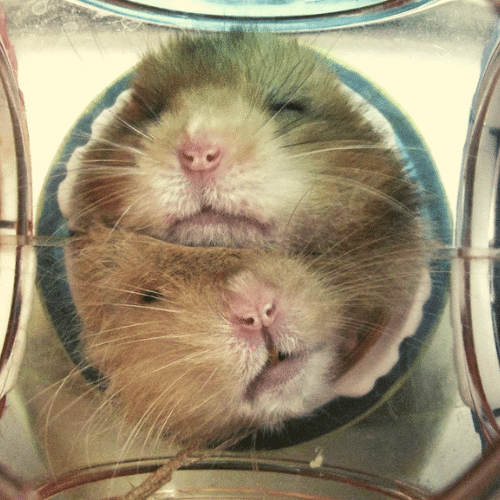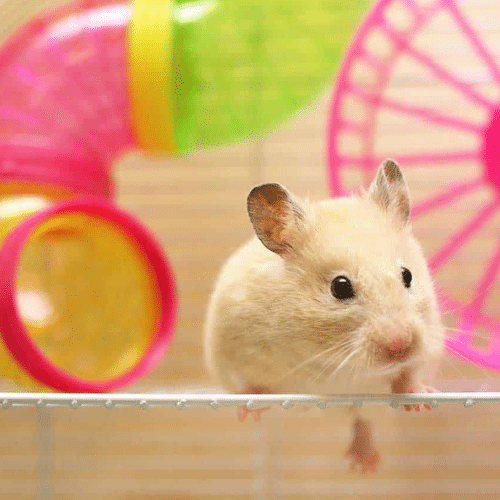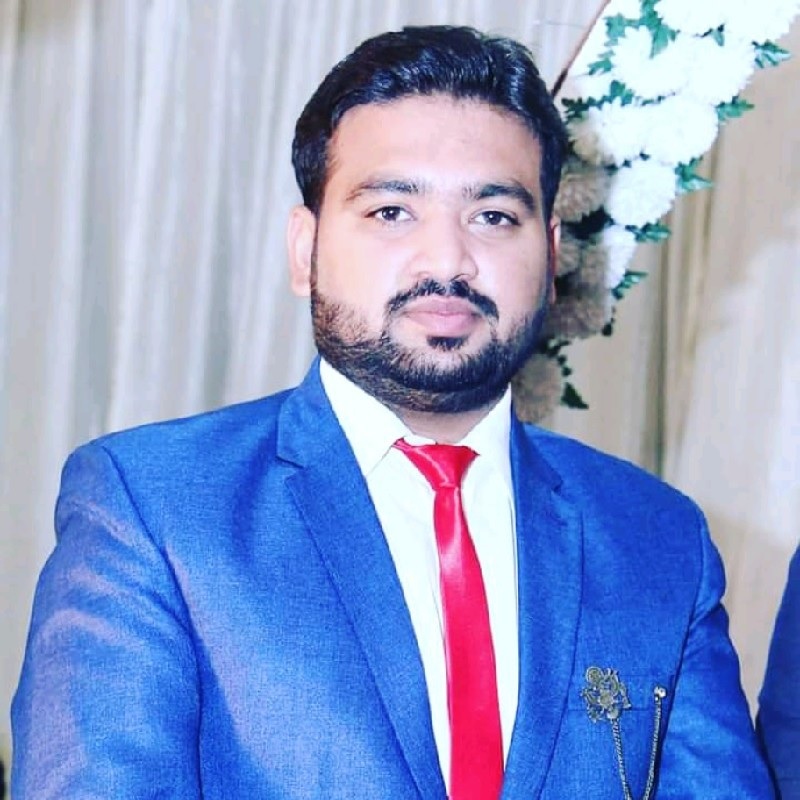Many Hamsters owners provide their pets with adequate cage material, including tunnels or tubes. It is because hamsters build tunnels in their natural environment and love to use tunnels/burrows all the time. But what about sleeping? Is it normal for hamsters to sleep in the tunnel?
Yes, it is typical for hamsters to sleep in tunnels since wild hamsters utilize tunnels not just for sleeping but also for protection against potential dangers such as predators and harsh weather.

When hamsters are sleeping in the wild, they burrow to conceal themselves and ensure their safety. Although it is impossible for your pet hammy to dig a deep burrow within his cage, he may use the tubes and tunnels you have provided for him to play in or sleep in as a replacement for a burrow.
It is possible for him to go inside the tube anytime he has feelings of danger or in order to sleep without being disturbed. It’s possible that he stays in the tubes either because he’s timid or because the atmosphere outside his enclosure is loud and scary. Before you attempt to get your hamster out of his tubes, you must determine why he is hiding there in the first place. You should never try to dump your hamster out of a tube or forcibly remove him from the tube unless your pet is suffering from a severe medical need that really must be addressed by your veterinarian. In this case, you should only attempt to do so in an emergency situation.
Why Do Hamsters Sleep in Tunnels? (Tubes)
Hamsters are particular about where they lay their heads at night. Hamsters will locate a spot within their cage in which they feel secure enough to sleep, knowing that they will not be bothered by outside sounds, light, or even by their fellow hamsters.

This may entail the hamster curling up into a ball in one of the corners of its cage and sleeping with its bedding tucked in around it. For some, it entails lying down below their spinning wheel as they sleep.
Some hamsters find their tubes to be more comfortable sleeping environments. Hamsters sleep in tunnels/tubes for a variety of reasons, the most common of which are listed below:
- Silent and concealed
Because hamsters often sleep during the day, they may opt to sleep in their tunnels because it’s a dark environment where the light of day won’t bother them.
- Protected and Guaranteed
Hamsters living in the wild don’t doze off in the open since doing so would make them an easy target for other animals. Instead, they excavate underground tunnels and sleep in there for protection.
Even though they have spent their whole lives in confinement, hamsters kept in cages still retain the same natural inclinations. They get the same feeling of protection and security from being encased in their tubes as they sleep.
- Noises
When the hamster is attempting to sleep, it may be bothered by noises if its cage is positioned in an area with a lot of background noise. When it goes inside its tube, the sounds may be muffled, allowing it to sleep more easily.
You might try doing an experiment in which you make certain that the region close to where your hamster is housed remains peaceful during the day and observe whether or not your hamster discovers a new place to sleep.
If a hamster chooses to continue sleeping in the tubes, it must consider them to be the most pleasant spot they have discovered.
- Shy and Afraid
It is possible that your new hamster is timid or terrified of its new surroundings if it chooses to remain in its tube at all times, including when it is sleeping.
A hamster may experience a substantial change when it is transported from an environment it is comfortable with into an environment it has never experienced before. This is especially true if the hamster was only recently separated from its mother.
Allow it some time to adjust to its new surroundings, including the new cage and your presence. In this manner, your hamster will likely start to emerge from its tube, at the very least, to feed and play.
Is It Okay to Let Hamsters Sleep in Tunnels All Night?
The majority of tunnels pose no threat since wild hamsters dwell in tunnels beneath the earth. On the other hand, there are a few things you need to be aware of in regard to tubes so that you can keep your hamster safe, including the following:
- High temperature
If you notice that your hamster likes to sleep in the tube provided for it, move the cage, so it is not in the direct line of the sunlight.
If your hamster chooses to sleep in its tube and the sun shines on it, the tube may get too hot, causing it to become very ill due to heat exhaustion or dehydration.
- Tube material and size
Because there are so many different hamster tubes available for purchase and so many different ways to make your own hamster tubes, you might think that any of them would do the trick. On the other hand, hamster tubes are not a solution that works for everyone.
Some hamster tubes are made to fit dwarf hamsters, while others are made to fit bigger Syrian hamsters. Dwarf hamsters and Syrian hamsters both live in tubes. To ensure that you get a tube that is suitable for your hamster, you need to pay great attention to the size measures listed on the packaging of the tubes.

Even if you purchase a tube that is the appropriate size for your hamster to run in, there is still a possibility that it will become entangled in the tube if it rolls up to sleep with its stuffing. If the tube is too tiny, there is a possibility that it will become obstructed on the very first pass-through.
- Ventilation (Air crossing)
Ventilation holes are typically already present in store-bought tubes; however, these holes might occasionally be too tiny to provide adequate ventilation for a hamster that is sleeping in the tube.
The ventilation holes that are given are suitable for hamsters while they are using their tubes for playing, but they are not always ideal for when they are using their tubes for sleeping.
You can remedy this problem by making the ventilation holes bigger, or you may try to convince the hamster to sleep someplace else, which might be an uphill struggle for you.
If you are going to use tubes that you made yourself, be sure they have ventilation holes that are the right size. In addition to this, you should check to see if the tubes are much bigger than your hamster.
Larger tubes provide air to flow about your hamster even while it is coiled up within the tube, so go for one of them instead of a smaller one. Your hamster companion can suffocate while they are asleep if there is insufficient airflow and ventilation.
Hamster Tunnel Types
There are generally two types of hamster tunnels:
- Commercially made hamster tunnels
- Homemade hamster tunnnels
- Commercially Made Hamster Tunnels
A variety of commercially available tunnel kits are produced by companies that specialize in the production of items for pets. Utilizing one of these tunnel kits rather than building your own requires far less effort and time than the alternative. However, because there are so many possibilities, it might be challenging to locate ones of excellent quality.
- Homemade Cardboard Tunnels
Here is how you make homemade tunnels:
Materials:
- Toilet Paper Rolls: Since they are robust and large enough for most hamsters, they are a handy item to have on hand. As we continue to develop our maze, these roles will prove to be valuable as connections. But before you begin following this tutorial, you must ensure that your hamster can pass through the tubes without getting stuck.
- Paper Towel Rolls: Good quality paper towel rolls will be used in the construction of the maze by being used to create larger sections of the maze. Using these tubes will result in significant savings of both time and tape during the process of building tubes.
- Tissue Boxes: A tissue box is an ideal thing to use as a base for attaching your tubes. Because of this, they are fantastic locations to play with the things you provide your hamsters, such as shredded shavings, toys, and bedding.
- Scissors: In order to cut holes into the tubes and the tissue box packaging, you will need scissors.
- Paint: If you are feeling really creative, non-toxic paint can be used to decorate the tubes.
- Writing Instrument: in order to trace tunnels where you will need to cut, you will need a writing instrument such as a pen, crayon, sharpie, etc.
- Tape: in order to join the tubes together, you’ll need to use this.
- Are Hamsters Noisy at Night? [Guide]
- Is Lavender Toxic to Hamsters? [Detailed Guide]
- Can Hamsters Eat Black Sunflower Seeds? [Ultimate Guide]
- Can Hamsters Chew Through Plastic?
Procedure
- Determine the size of the maze (tunnel) you want to create
Find a suitable play area to put the maze in without worrying about hurting anyone. Getting a play area close to where you already let your hamster out is preferable. You might even utilize the main cage itself, but if the cage is pretty tiny, you might only be able to place a few tubes inside it. You also have the option of doing both!
- Create a blueprint for the design
You are going to want to begin by arranging the tissue boxes. These are going to be the portions of your maze that make up the corners. It’s kind of like putting together a jigsaw, where you start by looking for the parts at the very end. After the corners have been positioned, you can line up the way you want the tubes to connect.
It would help if you incorporated a few unexpected turns and twists so that your hamster is never quite sure what will happen next. Another thing you should keep in mind is that your hamster requires room to move about in. In addition, you may build levels by raising some of the tubes to a higher position.
- Paint your tubes
Because nobody loves that horrible brown cardboard tint, you should decorate the tubes to match your personal style rather than leaving them in their natural state. Because we don’t want any ill hammies, you must check to ensure that the paint is safe to use before you put it to use.
- Locating and Mapping the Tunnels
Create a pattern of all of the tunnels that will be cut into the tubes and boxes. You may test whether or not the tube will fit inside the box by placing one end of the tube over to the box and tracing it.
- Adjust the tubes and tape them together
Put each of the tubes into the hole that corresponds to it. In order to guarantee the stability of the maze, tape each of the pieces with many layers of tape. If a tube is going to be inserted into a hole, you need to ensure that there is not much room around the tunnel; if there is, you may cover the area with additional pieces of paper towel or tape.
- Let your hamster run free in the maze
Put your hamster inside the maze carefully, and give it time to investigate. Make sure you keep a close eye on them, so they don’t get away from you. If your pet is having trouble navigating the maze’s tunnels, try tempting them with goodies by hiding them at various points around the obstacle course.

Veterinarian (DVM, MS) Content Writer, Blogger, and WordPress Developer. Working as a pet/animal/bird/fish/reptile/wildlife writer for the past 7 years on many renowned platforms.




